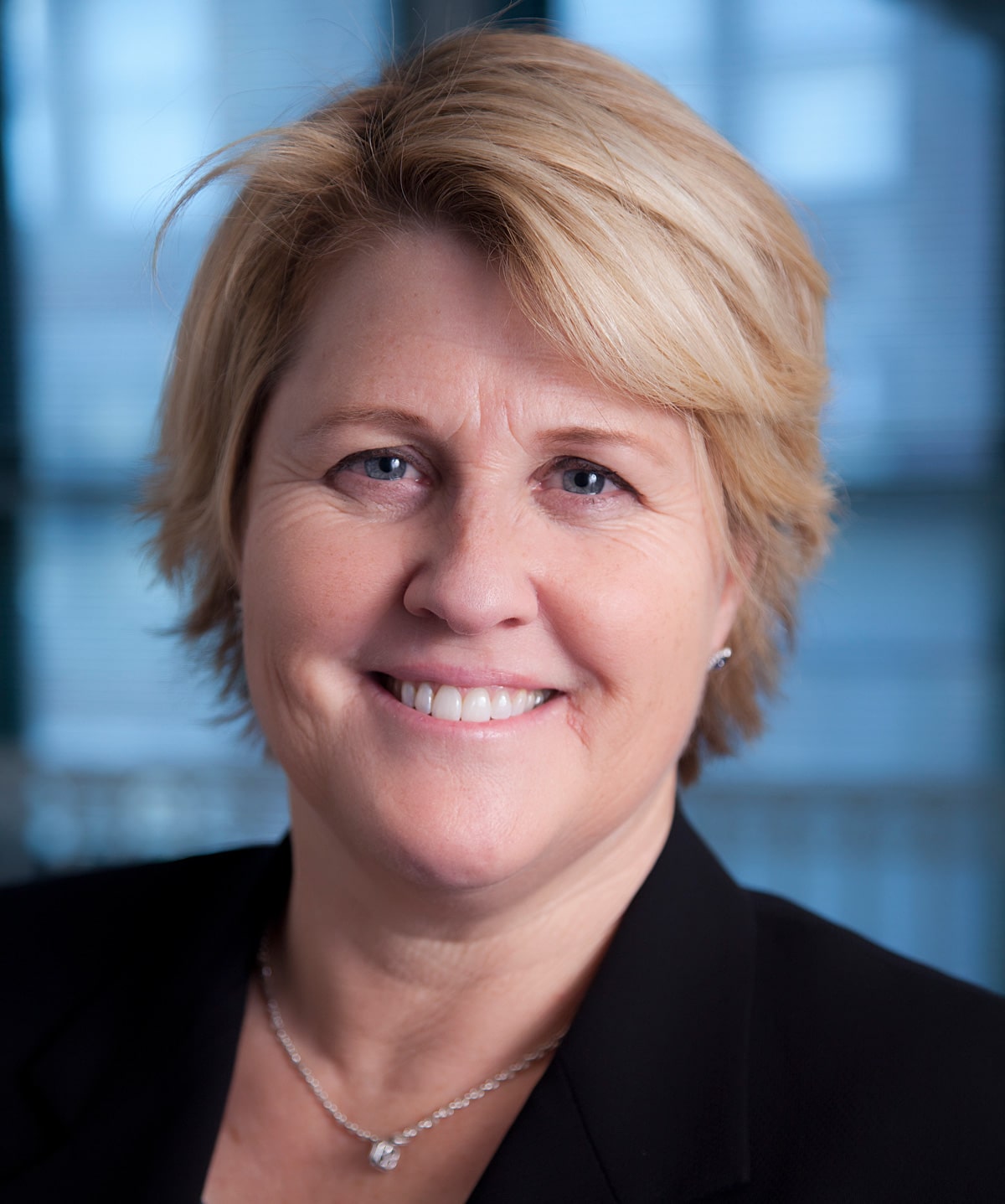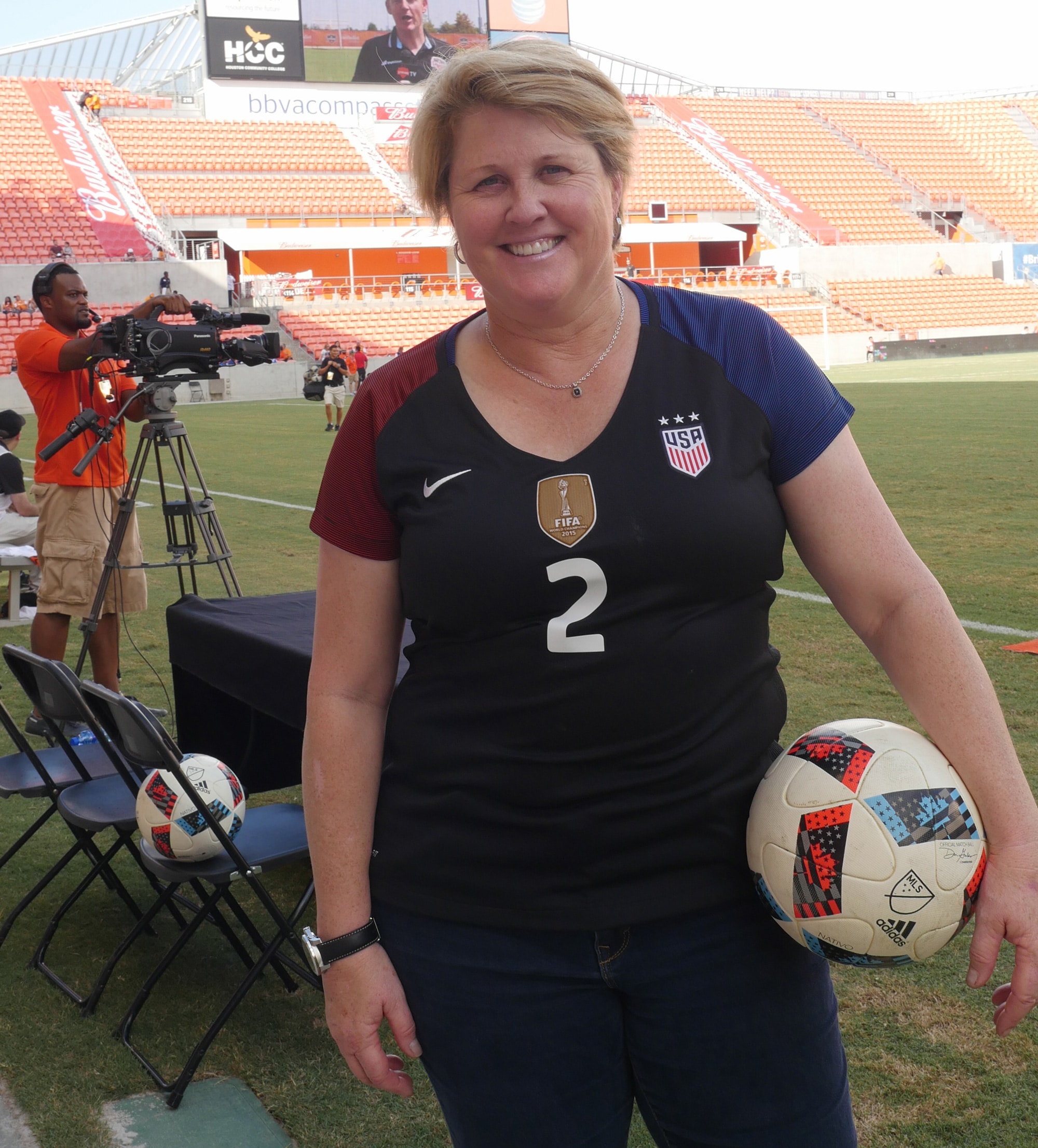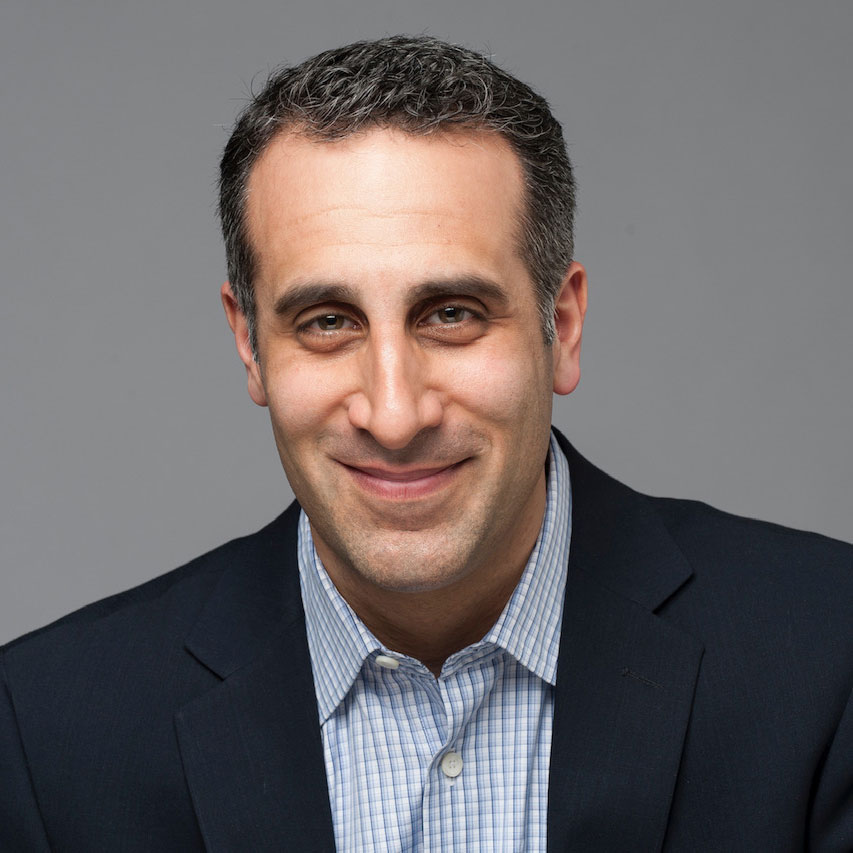
[Photo: Courtesy of Green Sports Alliance]
“I remember water rationing … To this day, I take two-minute showers.”
Former World Cup champion and Gold Medal–winning soccer goalie Mary V. Harvey has been an active part of the American and international sports scenes on and off the field for nearly three decades. She has been environmentally conscious for even longer. Upon returning to the U.S. in 2008 after a five-year stint with FIFA overseas, she became chief operating officer for Women’s Professional Soccer and began looking for her “next opportunity to give back.” After a chat with Green Sports Alliance Executive Director Martin Tull, her search was over; several months later she was on its board. The position enables Harvey, who now serves as principal of Ripple Effect Consulting, to combine her lifelong passions to great effect.
gb&d: You went from high-profile player to high-profile advocate. How did you become involved in environmental issues?
Harvey: It’s an interesting progression, I suppose. I grew up in Northern California, and two things happened during my early teenage years. One is that that first drought of ’76, ’77. I remember water rationing. I remember putting bricks in the toilet and everybody’s lawns were dying and we were using the laundry water to water plants. I remember my mom painting, with fingernail polish, what 13 gallons looked like on the bathtub. And to this day, I take two-minute showers. You go through something like that, it makes an impression. The other thing that happened growing up is that the family next door, their oldest son became a really early advocate for recycling. So at an early age, I had an awareness of the importance of reusing.
gb&d: What does it mean to be green in the sports world?
Harvey: The origins of the green sports movement are a bunch of stadium operators in the Pacific Northwest who are in this environmentally conscious community—Seattle, Portland—and they’re trying to match up the values of the community with how the stadium operates and conducts itself. Because people in these communities come into these stadiums and they don’t see things that they’re used to seeing and they’re like, “What’s going on here?” So there’s an expectation [from] fans and communities, when they go to professional sports [events], that the professional sports organizations are going to mirror the values they have.
gb&d: What is the Green Sports Alliance doing to educate the sports world about the importance of going green?
Harvey: First of all, we’re a convener. So every year, we convene people who are actors in this space, [from] people who run stadiums and arenas to people who work in front offices at teams or leagues to vendors who participate in compostable food projects [and] sustainably made textiles. So we convene the industry, and that in and of itself provides value to people who are active in this area. Beyond that, we work individually with members and share case studies and make them available. Pretty much soup to nuts what you can do to address any one of a variety of areas. On top of that, there are webinars every month that do a deeper dive into each one of these areas and provide educational material.

[Photo: Courtesy of Green Sports Alliance]
gb&d: What are some examples of improvements to the built environment at stadiums and other venues?
Harvey: The Golden 1 Center [Sacramento Kings] is LEED Platinum Certified and the host of this year’s Green Sports Alliance Summit. There’s also a solar array on the roof and it is entirely solar powered. In addition, they do extensive composting and displacement ventilation for air flow to enhance fan comfort and experience. The STAPLES Center [in Los Angeles] uses hydrogen fuel cells and also has a solar array. Fenway Park [Boston Red Sox] has Fenway Farms, a rooftop garden that contributes to cleaner air, storm water drainage, and more. And Ohio State University has an extensive composting program, is breaking ground on a new compressed natural gas fueling station, and is making campus electric vehicle charging stations available to the public.
gb&d: Having been involved in the sports industry for so long, what evolution have you witnessed in terms of green consciousness?
Harvey: I’ve lived in parts of the world where environmental consciousness has been very high. I grew up in California, so use of water in particular, but later on other things. And then I lived in Northern Europe, which has been in many ways much more advanced than we are. It’s mandatory that you do certain [environmental] things or you get fined; it’s not voluntary. I was an expat for 11 years in three countries, all of which had very progressive environmental policies. And the green sports movement over there sort of is born out of compliance to existing laws, as opposed to [in the U.S.], where it’s voluntary. So the green sports movement, just in the short time I’ve been involved in the GSA, has grown tremendously. Greater traction. Greater awareness. And I think even now, with the Paris accord and all of these things, there’s much more top-of-mind conversation around environmental stewardship and the need for it. It’s much more mainstream than ever before, and that’s not going away; it’s just going to increase.
gb&d: You were at the White House last year for the Sports Climate Change Roundtable. What can the U.S. Government do to help organizations like yours and others with messaging when it comes to convincing these sports organizations to go green, to reduce their carbon footprints?
Harvey: Certainly, having a declaration of a Green Sports Day [by the Obama Administration] and having the Executive Branch behind it was incredibly helpful. It’s in press briefings and it’s a matter of record, so it gives you—I don’t want to say legitimacy, because it was a legitimate movement even before that—but it credentializes it for sure: This is important. This matters.
gb&d: Looking back over the past decade or so, is there one positive change in particular you’re most proud of?
Harvey: There’ve been so many. I would say just witnessing the nature of the conversation. When I joined the [GSA] board, we were very much focused on how to grow the movement, but through teams and leagues and venues. While there are varying degrees of implementation, a lot of them have sort of reached an inflection point to where we’re now talking about fan and athlete engagement, community engagement.
gb&d: The GSA seems like a great marriage of experience and interests for you.
Harvey: Yeah, I just loved them and what they were trying to do, and it made so much sense to me personally. I’m not an expert in this field; I’m just an athlete that grew up during water rationing in California and has never forgotten it.

